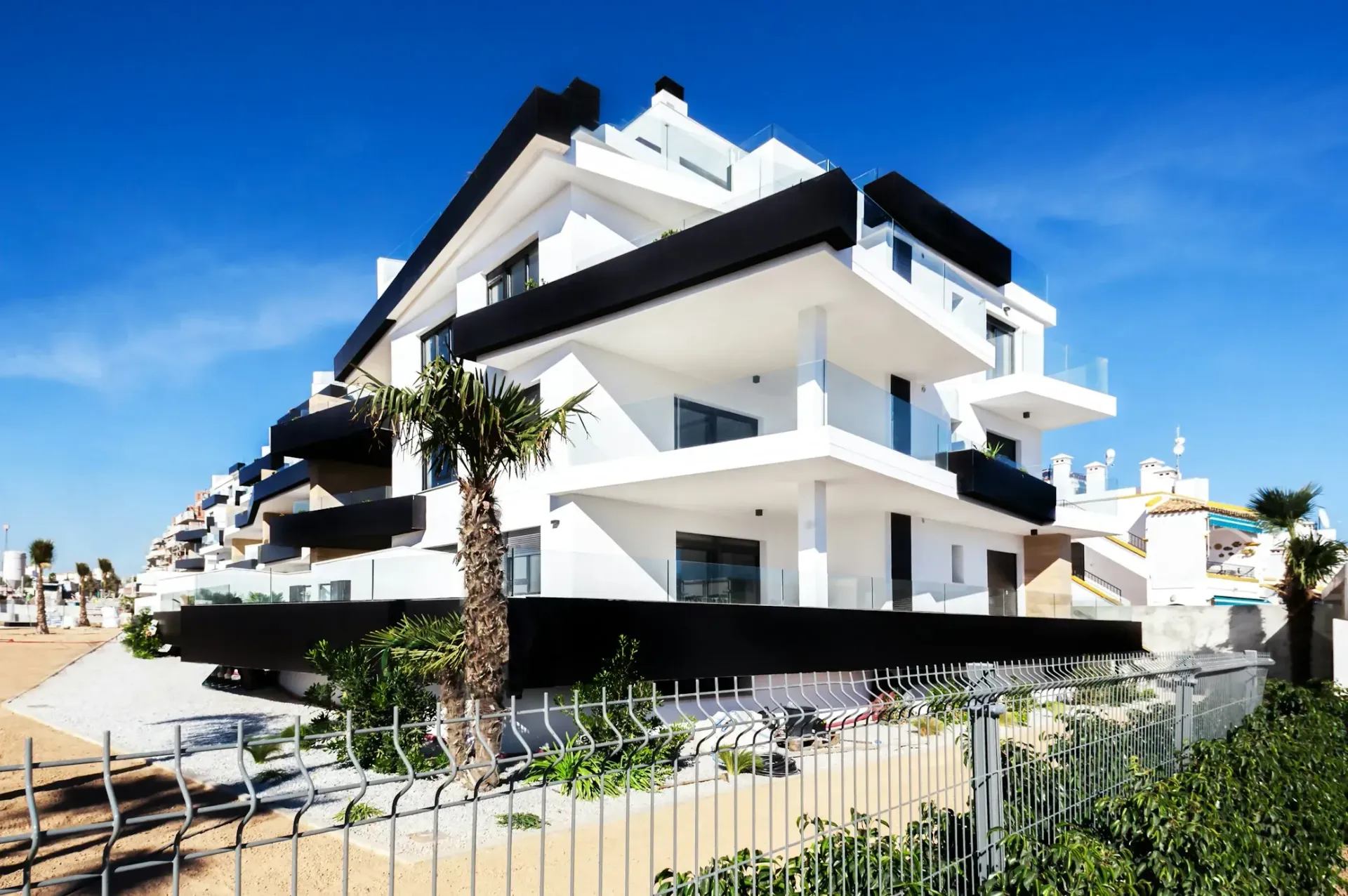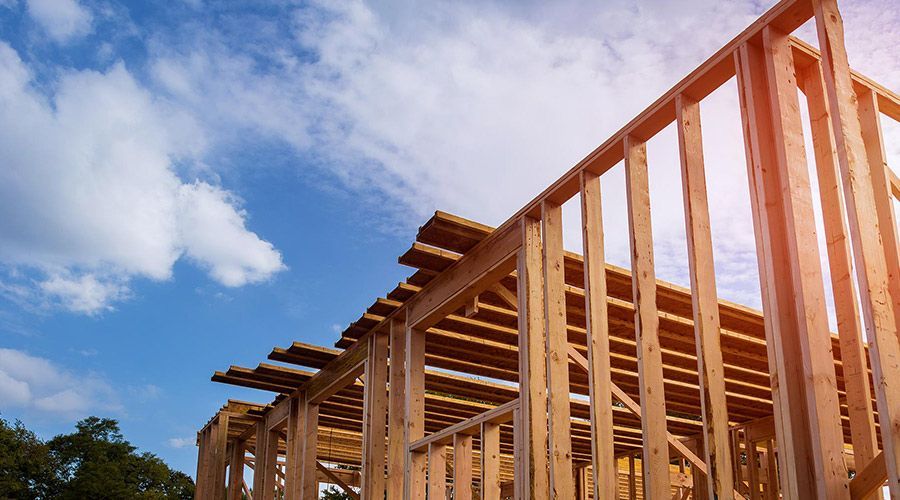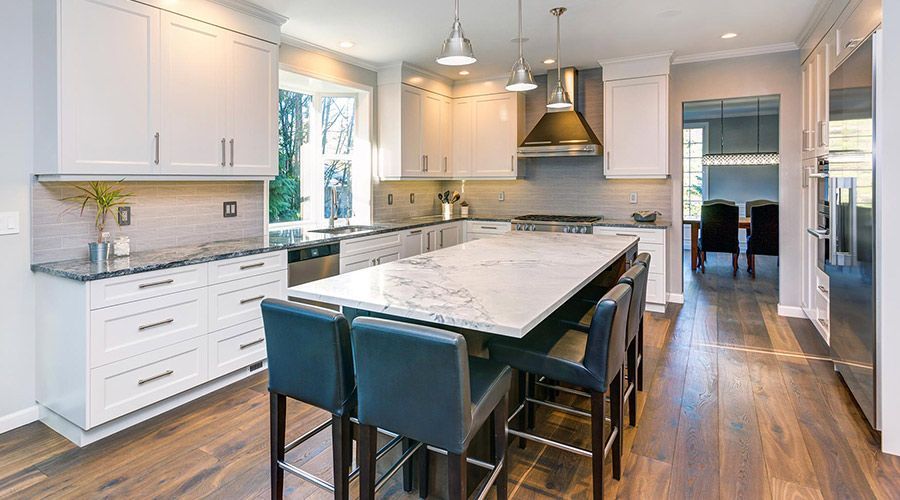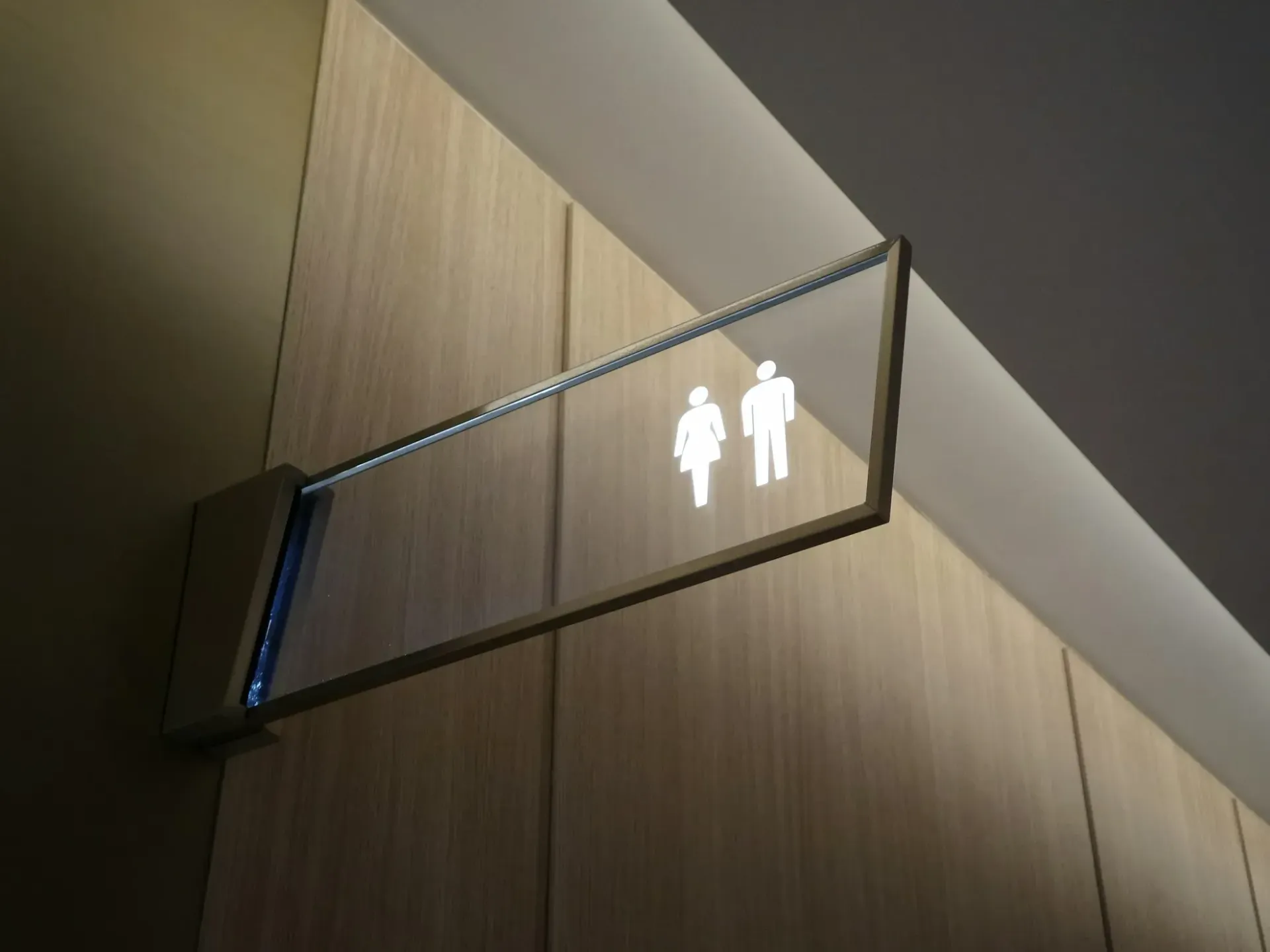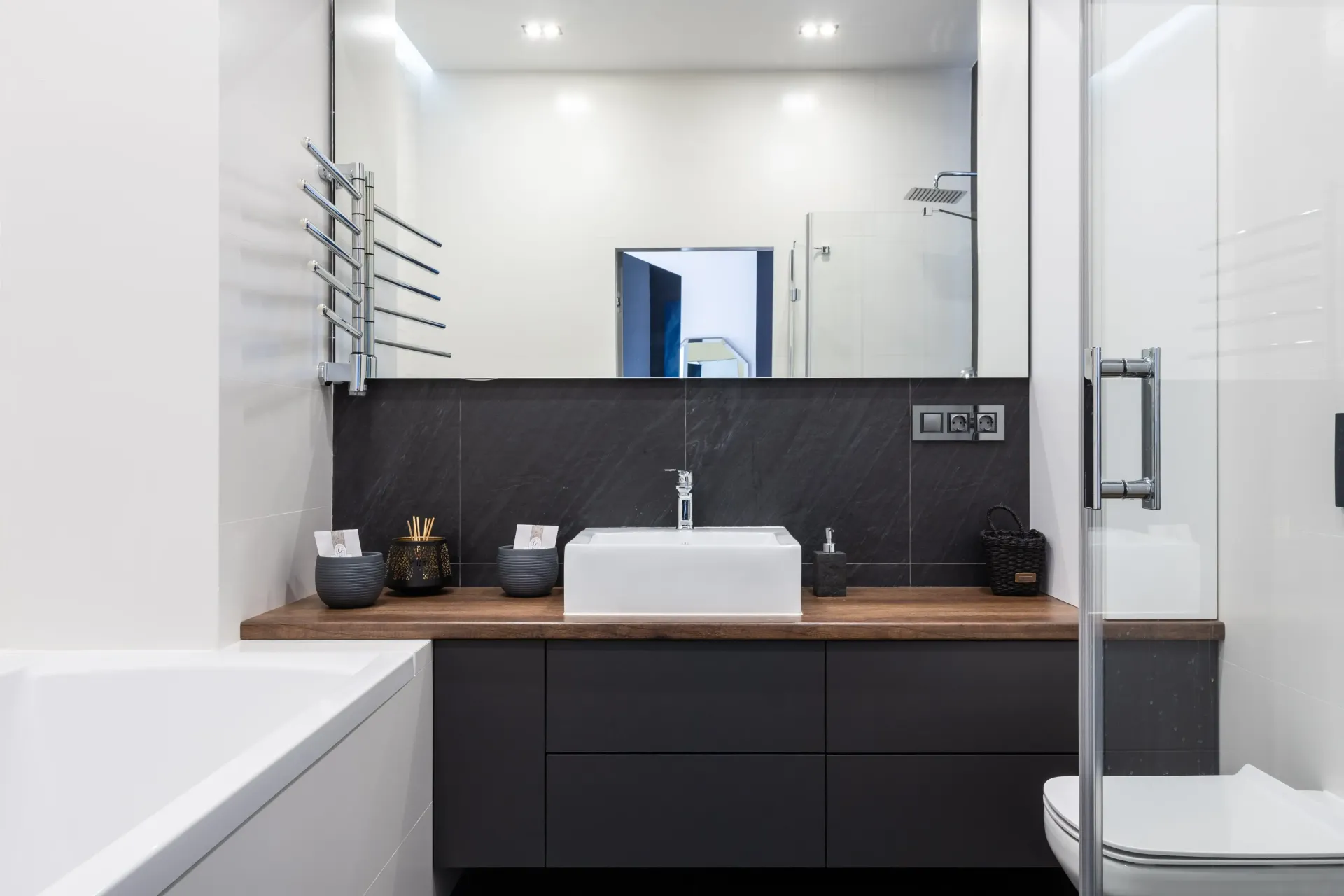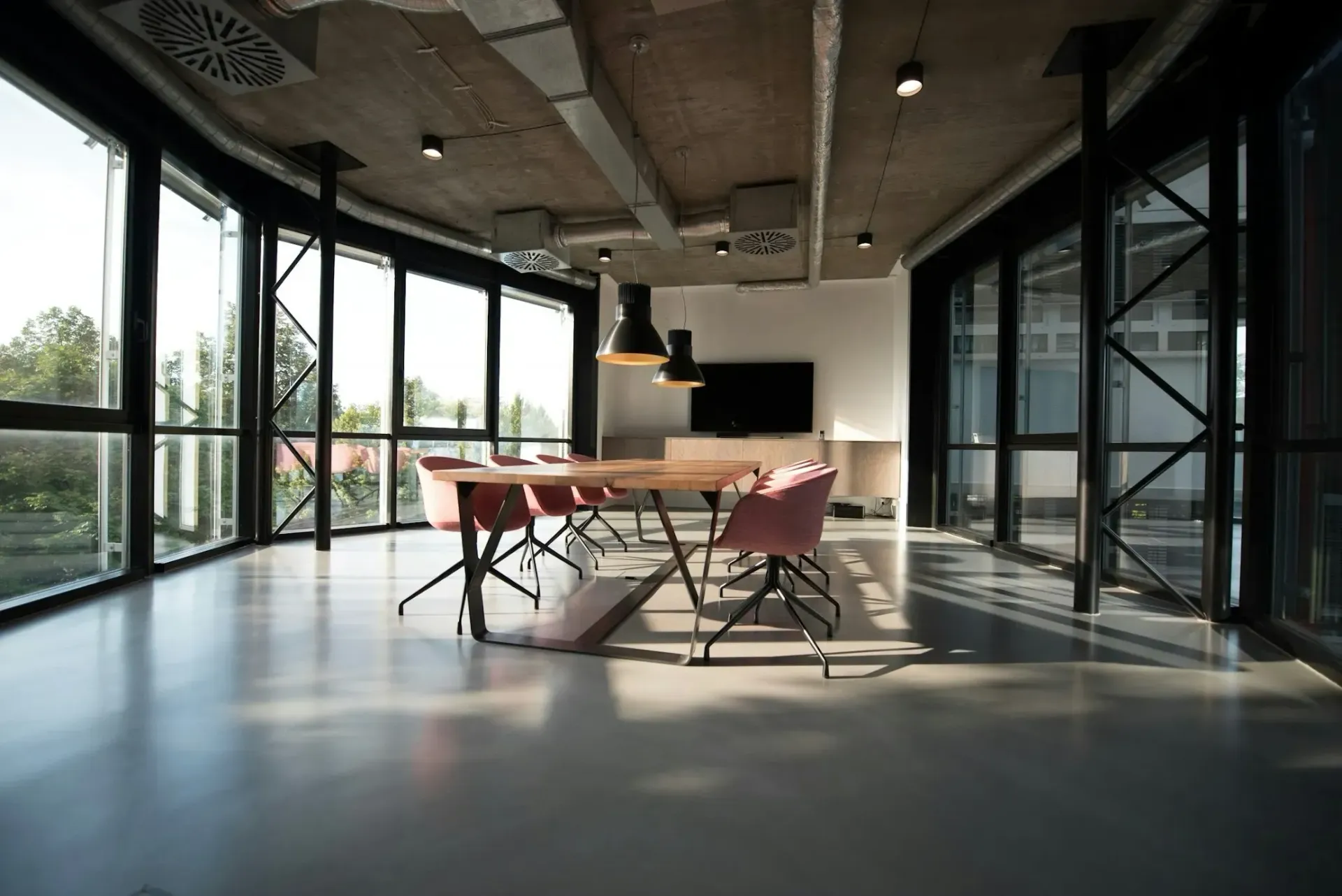
What is Commercial Construction? Everything You Need to Know
Commercial construction builds spaces for businesses. Unlike residential construction, which focuses on homes, commercial projects create structures like retail stores, hospitals, and office buildings. These projects vary in size, from small shops to massive skyscrapers, and each serves a specific industry.
In this blog, we'll dive into the commercial construction basics, covering the types of commercial construction, the process, key players, and more. Whether you’re curious about how these projects work or need details for a future build, this guide will provide the insights you're looking for.
Types of Commercial Construction
Retail Spaces
This includes shopping malls, boutiques, and big-box stores. These buildings are designed to attract customers and create a space for businesses to sell products or services.
Office Buildings
From small office complexes to towering skyscrapers, office buildings house businesses, law firms, tech companies, and more.
Industrial Buildings
Factories, warehouses, and distribution centers fall under this category. These are designed to handle heavy machinery and large-scale production.
Educational Buildings
Schools and universities require specialized designs to accommodate classrooms, labs, and other learning spaces.
Healthcare Facilities
Hospitals, clinics, and urgent care centers are all part of commercial construction focused on the medical field.
Mixed-Use Developments
These buildings combine commercial, residential, and recreational spaces into one. Think of apartment complexes with retail stores on the ground floor.
Each of these types of commercial construction requires specific planning and expertise to meet industry needs. From retail construction to healthcare facilities, commercial buildings are vital for supporting modern business operations.
The Commercial Construction Process
Commercial construction follows a structured process to ensure that each project is completed on time, within budget, and to specification. Here’s a breakdown of the typical steps involved:
Pre-Construction Phase
This phase focuses on planning and preparation before any physical work begins. It includes:
- Site Selection: Finding the right location that meets zoning laws and project requirements.
- Design and Planning: Architects and engineers create blueprints, floor plans, and detailed designs that match the client’s vision.
- Budgeting: Estimating costs for labor, materials, and other project needs to set a realistic budget.
- Permits and Approvals: Securing building permits and meeting local regulatory requirements.
Construction Phase
Once everything is set, the actual building process begins. This phase includes:
- Groundbreaking: The initial site clearing, excavation, and foundation work.
- Project Management: General contractors oversee the day-to-day operations, ensuring that each part of the project stays on schedule and within budget.
- Material Procurement: Ordering and delivering building materials like steel, concrete, and glass.
Post-Construction Phase
After the building is complete, there are a few final steps:
- Final Inspections: Ensuring the building meets safety standards, building codes, and project specifications.
- Handover: Once everything is approved, the building is officially turned over to the owner.
- Ongoing Maintenance: Some construction companies offer maintenance services to keep the building in top condition.
By understanding this commercial construction process, businesses can better plan for timelines, budgets, and project expectations.
Who’s Involved in Commercial Construction?
Commercial construction projects require a coordinated effort from several key players, each bringing their expertise to the table. Here are the primary roles involved:
General Contractors
General contractors oversee the entire project, managing everything from hiring subcontractors to ensuring that the project stays on schedule. They act as the main point of contact between the client and all other parties involved.
Subcontractors
These are specialized workers hired by the general contractor to perform specific tasks, such as plumbing, electrical work, roofing, or HVAC installation. Subcontractors handle much of the hands-on labor in commercial construction.
Architects and Engineers
Architects design the structure, ensuring it meets both the client's vision and all legal requirements. Engineers work alongside them, focusing on the technical details, such as structural integrity, electrical systems, and plumbing layouts.
Project Managers
Project managers ensure that everything runs smoothly from start to finish. They are responsible for managing timelines, budgets, and communication between the client, contractors, and other key players.
These roles are essential to any commercial construction project. Without clear coordination and communication, projects can experience delays, budget overruns, or even safety issues.
Commercial Construction vs Residential Construction
While both commercial and residential construction involve building structures, they differ in several key ways:
Scale and Complexity
Commercial construction projects tend to be much larger in scale and complexity compared to residential projects. Commercial buildings like office towers, hospitals, and shopping malls require more extensive planning, larger teams, and specialized equipment.
Regulations and Codes
Commercial buildings must adhere to stricter regulations and building codes than residential ones. This includes zoning laws, fire safety regulations, accessibility requirements (like ADA compliance), and energy efficiency standards. Commercial construction also has to meet stricter inspections throughout the building process.
Materials and Techniques
Commercial construction often uses more durable materials, such as steel frames, concrete, and advanced building systems. These materials are chosen to handle heavy traffic, large equipment, or high occupancy loads. Residential construction typically involves simpler materials like wood, drywall, and basic insulation.
Cost Differences
Because of the larger scope and complexity, commercial construction projects tend to be more expensive than residential ones. The costs include higher labor expenses, specialized equipment, and more detailed design requirements.
Understanding the differences between commercial construction and residential construction is essential, especially for clients trying to budget for new projects or understand the scope of work required.
Commercial Construction Regulations and Compliance
One of the biggest challenges in commercial construction is ensuring that every aspect of the project complies with local, state, and federal regulations. These rules are in place to ensure safety, environmental protection, and accessibility.
Zoning Laws
Before construction can begin, the project must comply with local zoning regulations. Zoning laws dictate what kind of structures can be built in specific areas. For example, you can’t build a factory in a residential neighborhood or a shopping mall in a conservation area.
Building Codes
Commercial buildings must meet strict building codes, which govern everything from the structural integrity of the building to fire safety measures. These codes vary depending on the type of structure and its intended use. For example, healthcare facilities have specific codes for sanitation, patient safety, and electrical systems.
OSHA Safety Standards
The Occupational Safety and Health Administration (OSHA) sets the standards for workplace safety. In commercial construction, this means ensuring safe working conditions for all on-site workers, including proper equipment use, safety gear, and clear hazard communication.
Environmental Regulations
Sustainability is a growing focus in commercial construction. Projects must meet environmental regulations, such as LEED (Leadership in Energy and Environmental Design) certification, which promotes eco-friendly building practices. This includes energy-efficient designs, water-saving fixtures, and the use of recycled materials.
Ensuring compliance with these commercial construction regulations helps avoid legal issues, costly fines, and potential project delays.
Costs and Financing of Commercial Construction
The cost of commercial construction projects can vary significantly based on several factors, from the size of the building to the materials used. Understanding these costs and financing options is crucial for anyone planning a commercial build.
Budgeting Factors
Several key elements affect the overall cost of a commercial construction project, including:
- Labor Costs: Skilled labor, like electricians, plumbers, and construction workers, are essential for commercial projects. Labor costs can vary depending on the location and complexity of the job.
- Materials: The choice of materials, whether steel, concrete, or specialized finishes, plays a significant role in the overall budget. Commercial buildings often use higher-grade materials for durability and safety.
- Permits and Approvals: The cost of obtaining necessary permits and meeting regulatory requirements can add to the overall expense.
- Equipment and Machinery: Larger commercial projects often require specialized equipment, which can either be rented or purchased. This includes cranes, bulldozers, and scaffolding.
- Design and Engineering Fees: Hiring architects and engineers to design the project and ensure it meets all codes and regulations adds to the budget.
Cost Overruns
Unexpected challenges can cause costs to increase. These can include delays due to weather, changes in material prices, or unforeseen site issues. To manage this, many projects build in a contingency budget to cover potential overruns.
Financing Options
Most commercial construction projects are financed through loans or investments. Some common financing options include:
- Commercial Construction Loans: These loans are specifically designed to finance construction projects and often have favorable terms during the build period.
- Leasing: In some cases, businesses may lease a commercial space instead of building from scratch, which reduces upfront costs.
- Investor Funding: Large-scale projects may attract investors who fund part or all of the construction in exchange for a return on their investment.
Understanding commercial construction costs and the available financing options can help businesses plan more effectively and avoid financial strain during the building process.
Common Challenges in Commercial Construction
Commercial construction projects can be complex and face a variety of challenges. Being aware of these potential obstacles helps ensure projects run smoothly and on time.
Budget Overruns
One of the most common issues in commercial construction is exceeding the project budget. This can happen due to unexpected material costs, labor shortages, or delays. Careful budgeting and contingency planning are essential to avoid financial strain.
Meeting Deadlines
Delays are common in commercial construction due to factors like bad weather, supply chain disruptions, or unforeseen site conditions. These delays can push back project timelines and increase costs. Having a solid project management plan and contingency strategies in place can help reduce the impact of these delays.
Safety Concerns
Construction sites are inherently dangerous, especially for large commercial projects. Ensuring worker safety is critical, and this means complying with OSHA standards, maintaining proper equipment, and conducting regular safety inspections. Failing to meet safety standards can result in accidents, legal issues, and work stoppages.
Supply Chain Issues
Securing the right materials on time is crucial for keeping a commercial construction project on schedule. However, global supply chain disruptions can lead to shortages or delays in obtaining essential materials. Building good relationships with suppliers and having backup options can mitigate these risks.
By addressing these challenges in commercial construction, companies can better prepare for potential setbacks and ensure a smoother building process.
Sustainable Commercial Construction Practices
As the construction industry evolves, sustainability has become a major focus in commercial building projects. Sustainable practices not only help the environment but can also reduce operating costs and improve building efficiency in the long run.
Energy-Efficient Design
Many modern commercial buildings are designed with energy efficiency in mind. This includes the use of smart lighting systems, energy-efficient HVAC systems, and improved insulation to reduce energy consumption. Solar panels and other renewable energy sources are becoming more common in commercial projects as well.
LEED Certification
Leadership in Energy and Environmental Design (LEED) certification is one of the most recognized programs for sustainable buildings. Achieving LEED certification means a building meets high standards in energy savings, water efficiency, CO2 emissions reduction, and overall environmental quality. Many companies seek LEED certification to boost their eco-friendly credentials and reduce operational costs.
Green Building Materials
Using sustainable materials is a key part of green construction. Recycled steel, eco-friendly insulation, and low-VOC (volatile organic compounds) paints and finishes are increasingly popular choices. These materials reduce the environmental impact of construction and make the building healthier for occupants.
By adopting these sustainable commercial construction practices, businesses not only meet modern environmental standards but also create buildings that are more cost-effective and efficient in the long term.
Trends Shaping the Future of Commercial Construction
The commercial construction industry continues to evolve, with new technologies and trends reshaping the way buildings are designed, constructed, and operated. Here are a few key trends that are shaping the future of the industry:
Smart Buildings
Smart technology is being integrated into more commercial buildings, allowing for automated systems that improve energy efficiency, security, and overall building management. These systems can control lighting, heating, air conditioning, and even security features, all from a central, cloud-based platform. This trend is transforming how commercial spaces are operated, making them more adaptable and cost-efficient.
Modular Construction
Modular construction involves creating sections of a building off-site and then assembling them on location. This method can reduce construction time and costs significantly. It also allows for greater flexibility in design and can help manage labor shortages since much of the work is done in a controlled environment.
Automation and AI
Artificial intelligence and automation are increasingly being used in commercial construction for tasks such as site inspections, project management, and even construction itself. Drones are commonly used to monitor construction sites, while AI can help predict potential delays and manage resources more efficiently. These technologies are helping to streamline the construction process and improve overall efficiency.
The future of commercial construction will likely see even more advancements in these areas, leading to faster builds, lower costs, and smarter, more sustainable buildings.
Conclusion
Commercial construction plays a vital role in building the spaces where businesses operate and grow. Whether it’s a towering office building, a bustling retail space, or a state-of-the-art healthcare facility, each project requires careful planning, the right team, and a deep understanding of regulations and trends. From budgeting and managing challenges to embracing sustainable practices and smart technologies, commercial construction is constantly evolving to meet the demands of modern businesses.
If you're looking for a reliable partner for your commercial construction project, Bluroc is here to help. Serving areas like Pleasant Grove, Park City, Deer Valley, Alpine, and Salt Lake City, Bluroc specializes in a wide range of services, including New Home Construction, Home Remodels, Kitchen and Bathroom Remodeling, Commercial New Construction, Commercial Remodeling, and Turnkey Commercial Construction. We also offer Commercial Kitchen and Bathroom Remodeling to meet your specific business needs.
Whether you’re starting from the ground up or remodeling an existing space, Bluroc’s team of experts will guide you through every step of the process. Get in touch with Bluroc today to discuss your next construction project and experience quality workmanship from a trusted partner.




